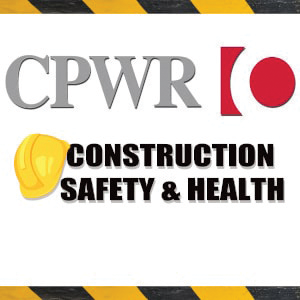California seeks to improve fire resiliency of structures
Faced with the unrelenting threat of wildfires, California researchers and lawmakers are working to enhance protections for residential structures in risky wildland urban interface zones, according to the North Bay Business Journal.
During 2020, wildfires burned more than 4 million acres in California and damaged or destroyed more than 10,000 structures, according to ca.gov. The unprecedented level of destruction renewed calls for creating and remodeling structures with more fire-resistant materials and methods.
A model simulation of an active wildfire conducted by the Insurance Institute for Business & Home Safety® in 2019 confirms what many building experts already know: A structure built with fire-resistant materials has a better chance of surviving a wildfire than a structure built with traditional materials. Chances are as high as 90% a traditionally built structure will ignite once embers from a fire land on or by it, IBHS researchers found.
Certain parts of structures are especially vulnerable to fire, particularly when embers from a fire are blown onto a structure.
“The roof is extremely important,” says Steven Hawks, staff chief of the California Department of Forestry and Fire Protection (CAL FIRE). “Embers, if they find a weakness, can start a fire.”
Hawks emphasized the importance of using Class A fire-rated roofing materials, including slate, metal and tile, to enhance a structure’s fire resistance. Wood shake roof systems will be banned by the California Fire Code beginning July 1, 2021. In addition, mesh gaps in vents attached to homes can be reduced from 1/8 of an inch to 1/16 of an inch to decrease the risk of ember intrusion.
Legislation taking effect in 2021 will help researchers develop best practices to boost community wildfire resilience. Signed into law in 2019, Assembly Bill 38 establishes a five-year pilot program requiring California’s Office of Emergency Services and CAL FIRE to work together to create a statewide fire retrofit program to help building owners enhance their structures’ fire resilience. The bill requires the state’s fire marshal to identify building retrofit and structure hardening measures and CAL FIRE to identify defensible space, vegetation management and fuel modification activities eligible for financial assistance under the program.
“We need to help our homeowners and communities adapt to the new reality that wildfires are more common and more severe than ever, and the state can help by establishing new standards and identifying resources for that purpose,” says assembly member Jim Wood (D-Santa Rosa), author of Assembly Bill 38.
Some fire-affected communities already have implemented research-based building enhancements. A residential complex with 46 homes in the Fountaingrove neighborhood of Santa Rosa burned down during the Tubbs Fire in 2017 when embers penetrated structures’ attics during high winds. A new development, The Oaks, is being built there with state-of-the-art features and retrofits designed to ward off future fire threats.
At the direction of the homeowners association, builder John Farrow mandated the rebuilt homes include metal roofs and framing; vents removed from attics; fire-resistant spray foam as insulation in walls; concrete slabs in crawl spaces; a three-coated, stucco wall finish; garage door opener battery backup; automatic fire sprinkler systems; fire-tolerant landscaping; and tempered windows to avert massive heat.
“If there was a fire, [the houses] would have a better chance of surviving it,” Farrow says.
CPWR webinar to investigate causes of falls from heights

|
CPWR—The Center for Construction Research and Training held a webinar, Identifying Common Root Causes of Falls from Heights, Dec. 15 at 2 p.m. EST.
CPWR and the ANSI Z359 Fall Protection Standards Committee are working together to create and administer a new survey to collect detailed information about past fall incidents and their root causes. The survey aims to fill gaps in knowledge left by the Bureau of Labor Statistics Census of Fatal Occupational Injuries data and other traditional data sets by focusing on the experiences and observations of workers, contractors and other industry stakeholders who were victims or witnesses of a fall.
During the webinar, which included a Q&A portion, participants learned why this type of qualitative data is needed and how it will inform the ANSI Z359 committee’s development of standards and CPWR’s fall-prevention outreach efforts, among other topics.
Additional information is available at cpwr.com. Following the event, a recording of the webinar and presentation materials will be posted at cpwr.com/news-and-events/informational-webinar-series.
Fewer companies acted to enhance cybersecurity during 2020

|
The 2020 Travelers Risk Index found fewer companies took steps to mitigate cybersecurity threats during 2020 despite growing online safety concerns amid the COVID-19 pandemic, according to constructiondive.com.
In a survey of more than 1,200 business leaders, 48% reported using hacker intrusion detection software; 47% have undergone a cyber-risk assessment of their firms; 37% have undergone a cyber-risk assessment of their vendors; and 42% have written a business continuity plan that could help in a cyberattack.
Additionally, 22% of respondents said their companies had been victims of a hacker, the highest percentage since the survey’s inception in 2014.
Hackers increasingly are going after construction companies, which often are underprepared for an attack. Contractors work closely and share vital information with subcontractors and owners, so ensuring all parties’ data and information are safe provides an extra challenge. In addition, the disconnect between the field and the office can create lapses hackers can exploit.
After economic uncertainty, cyber risk is the second-highest concern among businesses. Business leaders worry “some or a great deal” about suffering a security breach (52%); unauthorized access to financial systems (50%); employees putting company information at risk (48%); becoming a cyber extortion or ransomware victim (47%); theft of the company’s customer or client records (47%); and suffering a cyber event because of employees working remotely (47%).



